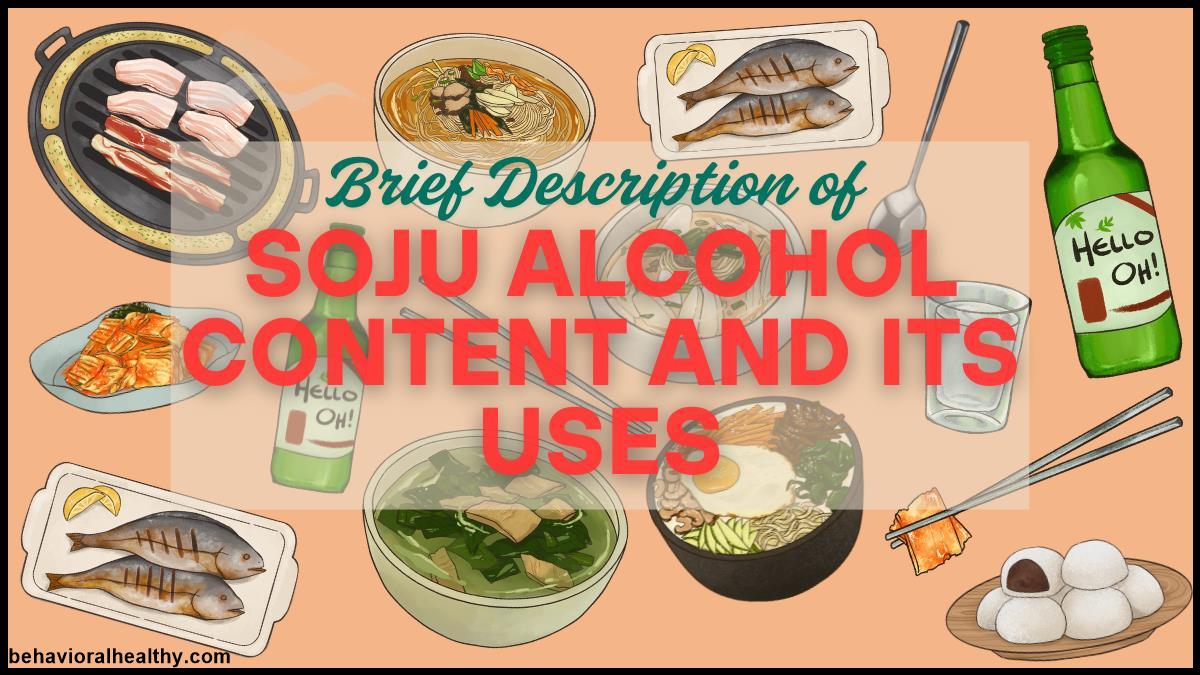The soju alcohol content is not just a number. It conveys a storied history, and a changing drinking culture surrounding the beloved Korean liquor.
Table of Contents
The Science Behind Soju Alcohol Content and Effects
Soju is a popular alcoholic beverage deeply ingrained in Korean culture and social life. It is famous for its smooth taste, low price, and versatility. Soju's history goes back to the 13th century. The drink's alcohol content and variants, depending on the brand, region, and brewing methods, are some of its most distinctive features.
The soju alcohol content also significantly affects drinking culture in Korea and beyond in terms of people-to-people relations, sociology, and modern drinking culture. This blog will delve into the historical, social, and cultural use of soju alcohol content and examine how this simple factor impacts how people drink this beloved drink.
A Brief History of Soju and Its Alcohol Content
Soju was first produced in Korea under the Goryeo Dynasty (918–1392) when invading Mongols brought distillation to the country from the Middle East. Early on, soju was made by distilling grains such as rice, wheat, or barley and had an alcohol content of around 30% or more. Then, as changes in distillation methods and government regulations took effect, soju alcohol content shifted to a milder level, ultimately shaping its reputation as a smooth and easy-to-drink beverage.
In the 1960s and 1970s, a rice shortage prompted the government to restrict the use of rice to make alcohol. This, in turn, gave rise to diluted versions of soju made from starch-based ingredients like sweet potatoes and tapioca.
The alcohol level of soju has been gradually brought down to about 20% so that it is less expensive and more palatable. Today’s modern soju usually ranges between 12% and 17% ABV (alcohol by volume), but premium and traditional distilled soju can exceed that level.
Soju and Its Part in Korean Societal Lifestyle
Soju drinking is not just about drinking alcohol in Korean culture; it is also about socializing and etiquette. The level of alcohol in dry soju will affect its nature when consumed in different social situations.
- Social or Festive Drinking
Soju is excellent for socializing due to its relatively low alcohol level (low compared to whiskey or vodka). Groups of friends, family, or colleagues often come together to drink rounds of soju, usually in small shot glasses. High-proof spirits, in contrast, give rise to short, raucous benders, while soju allows you to drink the entire night without being too drunk to talk to anyone, as a result, it’s become a popular drinking choice for hanging out.
- Business and Work Culture
Drinking culture is a deep-rooted part of professional relationships in Korea. Drinking soju is common in business meetings, corporate dinners, and networking events to build trust and teamwork. Soju has a low alcohol content, which means we can drink together and talk for hours without going beyond a point of no return. Alcohol can help create conversations between people far away and help us connect by making our journey comfortable and respectful.
- Korean Drinking Etiquette
Traditional Korean drinking etiquette customs are often characterized by showing respect, and the strength of the soju alcohol also plays a role in how these customs are applied. For instance:
- Younger people or subordinates should pour drinks for their elders or boss with both hands.
- When receiving a drink, it is polite to turn away slightly and drink in a reserved manner.
- Because the alcohol by volume of soju is lower nowadays, on average, soju is frequently filled up again, emphasizing the culture of generosity and togetherness.
Soju Alcohol Content in the Modern Age
Soju alcohol content has also evolved according to the changing preferences of consumers and globalization. Recent years have seen several trends that highlight this transformation:
- A Healthier Lifestyle With Lower Alcohol Soju
With health-conscious drinking on the rise, many brands have started making lower-alcohol soju, at around 12-14% ABV. This enables consumers to experience the authentic tastes of soju while decreasing alcohol consumption. Some brands even promote these variations as a lighter, more refreshing alternative to traditional soju.
- Flavored soju and how popular they are
Part of the variance in soju alcohol content in India comes from the rise of flavored soju. Peach, green grape, grapefruit, and yogurt-infused soju are more popular flavors. These also seem to have a lower alcohol content, around 12-14%, which is appealing to younger drinkers and international consumers.
- Premium and Traditional Distilled Soju
Low-alcohol soju dominates the market, but traditional distilled brands maintain a higher alcohol content of about 20–45% ABV. They are typically made in smaller quantities and prized for their deep flavors and historical significance. Premium distilled soju is aimed at enthusiasts who value craftsmanship and authenticity.
Bottom Line
The soju alcohol content is not just a number. It conveys a storied history, traditions, and a changing drinking culture surrounding the beloved Korean liquor. Soju has evolved from its distilled roots in antiquity to the creative flavored innovations of today. Still, the ABV has been a key force in defining social interactions and drinking responsibly. Whether drunk in a simple Korean dining room, served at a business meet-up, or sipped in a hip cocktail lounge, soju is a time machine connecting the past with the current, bringing people together through its rich cultural heritage.

